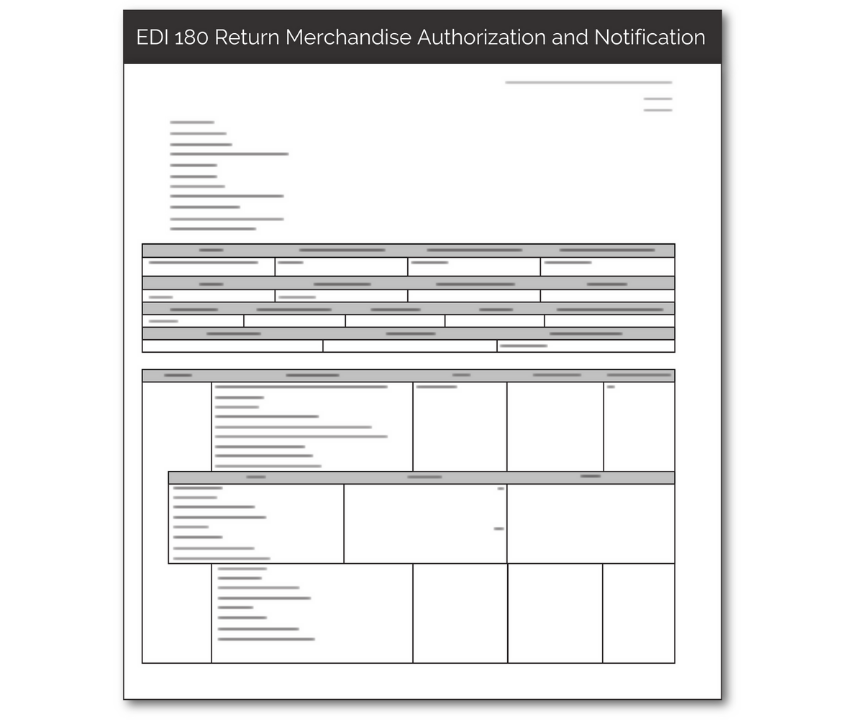EDI 180
Return Merchandise Authorization and Notification

What is an EDI 180?
An EDI 180 Return Merchandise Authorization and Notification is an electronic data interchange (EDI) document used by retailers and suppliers during the returns process. It can be used as both a request and an authorization, as well as a notification document.
EDI 180 documents follow the x12 format set by the American National Standards Institute (ANSI), a not-for-profit organization that regulates EDI formats in the U.S.
What are the Essential Components of EDI 180?
EDI 180 transactions need to include key information about a return. Because EDI 180 can be sent bi-directionally for multiple types of communications, the document also needs to specify its specific use case. Key data that may be included on EDI 180 include:
- Product information, such as SKUs or UPCs
- Indication of authorization, request, or notification
- Indication of reason for return
- Shipping information, such as ship-from/ship-to information

How do I Use EDI 180?
Retailers can use EDI 180 to request authorization for a merchandise return, as in the case of damaged or defective products. Retailers can also use this document to notify suppliers about consumer returns to their store.
Manufacturers and suppliers can use EDI 180 Return Merchandise Authorization and Notifications to request a return, authorize the retailer to ship returned items, and notify the retailer when the merchandise has been received.
After receiving an EDI 180 transaction, the receiving party will reply with an EDI 997 Functional Acknowledgement.
What are the Benefits of EDI 180?
EDI 180 can help streamline the returns process for both retailers and suppliers. By using EDI 180, rather than faxes or emails, trading partners can eliminate time-consuming back-and-forth, enabling returns to be quickly processed and reconciled. Additionally, because EDI 180 is automated, there’s no need to key in data, which can help ensure data accuracy across the process.
Using EDI to process returns is also more secure than using emails, faxes, or paper documents. Many integrated EDI solutions use security protocols such as FTPs and HTTPs, along with at-rest and in-transit encryption to protect data in EDI transactions. This helps safeguard your data, and your trading partners’, from outside eyes.
